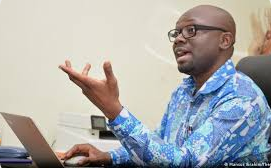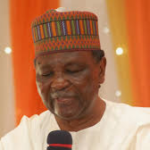Days ago, I stumbled on a fierce social media debate. It was centred on when Nigeria moved from “federal” to “unitary” system. I was very uncomfortable with the distortion of elementary political concepts but, as a basic rule, I do not participate in Nigerian social media debates. It is usually not a good use of time as things hardly end well. What actually jolted me was the confusion of “regions” with “federalism”. Somebody authoritatively declared that it was when we moved from “regions” to “states” in 1967 that we abandoned “true federalism” — and many agreed with him. There and then, I decided to revisit the government I studied as a subject in Form 4 during my O’Level education.
In a way, I can understand the confusion. When respected people say we should go back to “true federalism” by returning to the regions “as in the 1963 constitution”, those who do not have the foggiest idea of what used to obtain can easily confuse the concepts. I have come to understand that many Nigerians do not know the difference between a federal and a unitary structure, presidentialism and parliamentarianism, and other types and structures that define a political system. My modest attempt today is to pick on some of the common political concepts and explain them in simple and straight terms for the benefit of those who genuinely do not understand.
The first point I would make is that federalism is not determined by what you call the federating units. In Nigeria, we call the centre “federal government” and the subnational units “states”. Federations such as Mexico, the US and Germany also call them states. In Switzerland, they are called cantons; in Australia, states and territories; in Canada, provinces; in the United Arab Emirates (UAE), emirates; and in Ethiopia, regions. Therefore, what you call them does not determine whether the federalism is “true” or “fake”. Osun state was once renamed “State of Osun” in line with the nomenclature in the US where “true federalism is practised” and where states are called “State of…”
Now to the point: when did Nigeria move from “true federalism” to a unitary system? Without prejudice to the motive of those involved in the social media argument, it was the Unification Decree No. 34 of 1966 that abolished federalism and replaced it with a unitary system. The opening line of the decree was unequivocal about it: “Subject to the provisions of this Decree, Nigeria shall on 24th May 1966 (in this decree referred to as ‘the appointed day’) cease to be a Federation and shall accordingly as from that day be a Republic, by the name of the Republic of Nigeria, consisting of the whole of the territory which immediately before that day was comprised in the Federation.”
Before then, there were four regions: Northern, Eastern, Western (all created by Sir Arthur Richards in 1946) and Midwestern (created from the Western Region in 1963). Every region had provinces. Under the Unification Decree of 1966, the regions were “abolished” but — in a classic case of “potato/potahto” — they remained the same. Section 2(1)(c) of that decree stated that “the provinces… respectively comprised in Northern Nigeria, Eastern Nigeria, Western Nigeria and Mid-Western Nigeria shall be known respectively as the Northern group of Provinces, the Eastern group of Provinces, the Western group of Provinces and the Mid-Western group of Provinces”.
Now this: Section 2(1)(d) of the decree stated clearly that “for the purpose of administration each group of provinces shall subject to the authority of the Head of the National Military Government, be under the general direction and control of a Military Governor appointed by the Head of the National Military Government”.
That was the end of the federalism we started practising narrowly under the Richards Constitution in 1946 and more broadly under the MacPherson Constitution of 1951 and the Lyttleton Constitution of 1954. It was the 1954 constitution that actually refined our federalism by comprehensively listing the exclusive and concurrent powers. It was produced largely by Nigerians.
The 1960 and 1963 constitutions were basically updated versions of the Lyttleton Constitution to reflect Nigeria’s independence and republicanism respectively. However, it is only important and fair to state at this point that the move to a unitary system under the military in 1966 was logical: the military operates a command-and-control system.
All orders flow from the top. No military unit is independent of central authority. It is anathema under a military system for the supreme commander to issue an order and for a commanding officer to act differently or issue a counter order. It is not done. With the Nigeria military seizing political power, authority had to be centralised.
I was initially taken aback that the abolition of the four regions and creation of 12 states in 1967 by the military government was described as the abolition of federalism in favour of a unitary system. One person confidently said the change from “regions” to “states” marked the end of federalism. But on a second thought, I should not be surprised.
Anyone who has been listening to public debates recently will have heard that returning to “regionalism” was equal to returning to “true” federalism. That may suggest that regions and federalism are the same. That is not true. Unitary systems use “regions” as well. In Ghana, which runs a unitary system, the governing units are called regions.
Now to the concepts. What is unitary system? It is a political structure in which all powers belong to the central/national government. The subnational governments are subservient to the centre. In Ghana, for instance, the regions are subordinated to the centre. The 16 regions have 261 districts. The central government in a unitary system usually devolves power to the subnational levels.
The UK — a kingdom of four countries — runs a highly devolved unitary system, with Scotland, Wales and Northern Ireland having their own parliaments and heads of government business. No two unitary systems are the same. Every country localises its practice based on its own political evolution.
What is federalism? Here, power is shared between the national and subnational governments, unlike in the unitary system where all powers belong to the centre which in turn donates some to the lower levels. The basic principle of federalism is that the federating units are co-equals — and the states are not subservient to the centre.
The powers each partner has are listed on the exclusive and concurrent lists. Exclusive powers are reserved for the centre while concurrent powers belong to both the centre and states. Anything not on exclusive and concurrent lists are considered “residual” and are under states. The federal government is not superior, except in areas on the exclusive list.
Federalism is practised differently in different countries, but some characteristics are common: the monetary policy is controlled by the centre to avoid having different rates and currencies; foreign affairs are under the federal government, otherwise every state will appoint ambassadors; there is only one military, else every state will have an army, air force and navy; and the country’s borders are under the federal government.
However, every federation organises itself differently: there is state police in the US, unlike in South Africa. All resources are controlled by the Malaysian federal government; in the UAE, they are owned by the emirates; in Nigeria, there is a sharing formula.
In a typical federation, each federating unit has its own executive, legislature and judiciary — just like the central government. Each state runs its own budget and is not dictated to from the centre. Under military rule in Nigeria, state budgets were subject to approval by the head of state.
That was a unitary system which was effectively abolished under the 1979 Constitution. Also, federalism is essentially a union between two tiers of government, but some federations recognise local governments as a tier. Brazil’s local councils have been totally independent of the states since 1987. In Nigeria, there is a strong move towards granting political and economic autonomy to the LGAs.
What is a confederation? Interesting one. It is a loose political arrangement where the units are stronger than the centre. They have individual currencies, flag, anthem, military, legislature, judiciary and executive. They are independent of other confederating units.
To put it simply, it is a union or league of sovereign states — a marriage of convenience. Currently, there is no country that can be called a confederation. Although Switzerland is officially named the “Swiss Confederation”, it has been a federation since 1798. The US was a confederation from 1781 to 1789. Senegambia (Senegal and Gambia) formed a confederation that lasted for exactly seven years — from 1982 to 1989.
There are still confederations, nonetheless. The African Union (AU) is one. The European Union (EU) can be described as one, although its monetary union is a feature of federalism. There was a time many opinion leaders in Nigeria started demanding “Confederalism” as the solution to our political crises and the only pathway to development.
We are never short of ideas that we think will make the country great. Some have called for “true” federalism, “fiscal” federalism, change of name, change of flag and change of anthem. We are back to the “Nigeria We Hail Thee” anthem but there are yet no signs of massive development. The regionalism campaign has also staged a comeback. This is Nigeria.
As a parting shot, I would implore young Nigerians not to believe everything they read in the newspapers and on social media regarding political systems and the history of Nigeria. They should behave like the Bereans who subjected to biblical scrutiny everything they were told by the apostles.
I have come to realise that a lot of revisionism is going on and many people are manipulating history and political concepts just to ram home their biases and beliefs. Some are no longer interested in the facts. All they do is pass opinions as facts and prey on the vulnerable. We are free to hold opinions and propagate ideas as we debate the state of the union, but may we kindly respect the facts?
AND FOUR OTHER THINGS…
THE RIVERS BETWEEN
Why should a court of law direct the INEC not to release voters’ register to the Rivers State Independent Electoral Commission (RSIEC) for the local government election? Why should a court ask police not to perform their constitutional duty of providing security? We are literally ruining this democracy because of egos and politicking.
At the root is the conflict between Governor Simi Fubara and his estranged benefactor, Chief Nyesom Wike. President Tinubu must put his foot down on the crisis before things get out of hand. It is purely a political crisis to be resolved politically and Tinubu must urgently take the lead, otherwise the conflagration may become unquenchable. Statesmanship.
RISING STATS
Starlink recently announced a rise in its monthly subscription fee by 97 percent — from N38,000 to N75,000. The hardware is now N590,000, up from N440,000. The price hike, according to the satellite internet service owned by Elon Musk’s SpaceX, was necessitated by inflation in Nigeria. It is hard to argue against the justification, with the heavy depreciation in the value of the naira in the last one year and several other costs associated with tech services. However, with Nigerian telcos also making a similar case for tariff adjustments in response to the economic statistics, you sense that it is just a matter of time before the Nigerian Communications Commission (NCC) approves. Imminent.
KEMI BADOO
Kemi Badenoch, the former UK business and trade secretary, has been making a passionate bid to become the new leader of the Conservative Party — a step towards becoming the prime minister in the future if things work in her favour. I am so happy for her. But can she please stop telling lies about Nigeria? She said she left the country in 1996 after “leftist” policies had eroded private wealth. I know she was just six when the structural adjustment programme (SAP) was introduced in 1986, resulting in the massive devaluation of the naira, but SAP was a neo-liberal, not leftist, economic policy. I think she can use the services of fact checkers before her next Nigeria-bashing show. Shame.
NO COMMENT
The Jigawa state government has decided to acquire Khadija University, a privately owned institution in the state, for N11 billion. N11,000,000,000! Wow! What exactly is the state government buying? Is it the land (in a state where land is surplus to requirements)? Is it the buildings (how much does it cost to put brick and mortar together)? Is it the facilities (do they have nuclear reactors and rocket launchers on campus)? NB: this is aside the subventions for capital and operational expenditures that will soon enter the state budget. So, this thing they do with award of contracts and purchase of private buildings has now found its way into the campus? ELEVEN BILLION NAIRA. Wonderful.


